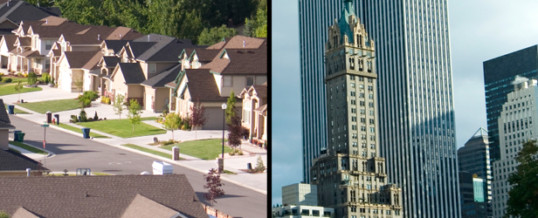
For the first time in decades, many U.S. cities are outpacing their suburbs in growth. According to recent Census data, 27 of the nation’s 51 largest metropolitan areas are outpacing their suburbs in growth between July 2010 and July 2011. By contrast, from 2000 to 2010 only five metro areas saw their cores grow faster than the surrounding suburbs. This underscores not only changing attitudes about urban living but also the impact of the housing bust and the recession.
Since the 1920s, U.S. suburbs have grown faster than city centers in every decade, when rising automobile ownership encouraged Americans to begin fleeing crowded city quarters for spacious suburbs. One reason for the move back to urban areas may be improvements in quality-of-life factors, like safety, that historically pushed people to the suburbs. Through the years, cities have become considerably more livable as crime rates have fallen in some urban centers and many downtown areas now feature new amenities like museums and sports stadiums. Another reason is the decades-long migration of factories to the suburbs and rural America, which has cleaned up the cities. For example, in New York in the 1940s, freight traffic ran on an elevated rail line on the city’s west side. These days, that same rail line is the High Line – a lovely elevated public park enjoyed by many New Yorkers.
JUL
2012


